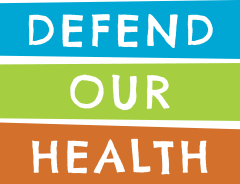Tips for a Toxic-Free School Year
September 4, 2018 | Uncategorized |
It’s back-to-school week for kids across the country, and for parents, that means stocking up on school supplies, packing school lunches, and making sure that children have all they need to learn and thrive in the new school year.
What’s an important way to keep children healthy and ready to learn? Reduce kids’ exposure to toxic chemicals.
With dangerous chemicals potentially hiding in school supplies, lunch food, and indoor air, following these simple tips can help make sure kids have a safer school day:
1. Seek out safer school supplies.
Certain brands of crayons, three-ring binders, and dry erase remarkers recently tested positive for toxic chemicals, according to a new report from the group U.S. PIRG. Specifically, Playskool crayons were found to contain asbestos, a Jot brand three-ring binder tested positive for phthalates, and dry erase markers made by EXPO and The Board Dudes contained BTEX chemicals.
Asbestos is extremely toxic and linked to lung cancer and other deadly diseases. Phthalates exposure harms developing brains and the way our hormones work, and is linked to ADHD and infertility later in life. BTEX (benzene, toluene, ethylbenzene, and xylene) are chemicals that can vaporize into the air where children breathe them in, and they can alter the ways our hormones are supposed to work. In particular, these harmful chemicals are linked to “dangerous disruptions in sexual reproduction, liver and kidney function and immune system functioning,” writes U.S. PIRG.
Luckily, most brands of school supplies were found to be safe. Download the full report, including the list of products found to be free of toxic chemicals, here.
2. When packing lunch, ditch the plastic.
Toxic chemicals often added to certain plastics include BPA (and its toxic replacements, such as BPS) and phthalates. It’s simple to avoid these toxic plastic chemicals: swap out plastic containers for glass or stainless steel, when possible.
In particular, be sure to seek out stainless steel or glass containers for hot food and drinks, since BPA and phthalates tend to leach out of plastic and into food when heated.
3. Encourage hand washing.
What’s a simple habit that helps reduce toxic chemical exposure? Hand washing!
Frequently washing hands has been shown to significantly reduce exposure to toxic chemicals often found on surfaces or in indoor dust, such as toxic flame retardants. Remind children to be sure to wash their hands during the school day, and particularly before eating lunch.
